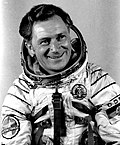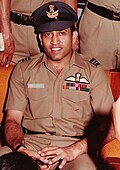
Since the first human spaceflight by the Soviet Union, citizens of 55 countries have flown in space. For each nationality, the launch date of the first mission is listed. The list is based on the nationality of the person at the time of the launch. Only 8 of 55 countries have been represented by female "first flyers" (Helen Sharman for the United Kingdom in 1991, Anousheh Ansari for Iran in 2006, Yi So-yeon for South Korea in 2008, Sara Sabry for Egypt in 2022, and Keisha Schahaff and Anastatia Mayers for Antigua and Barbuda in 2023, Namira Salim for Pakistan in 2023, Marina Vasilevskaya for Belarus in 2024, Aisha Bowe for The Bahamas in 2025). Only three nations (Soviet Union/Russia, U.S., China) have launched their own crewed spacecraft, with the Soviets/Russians and the American programs providing rides to other nations' astronauts. Twenty-eight "first flights" occurred on Soviet or Russian flights while the United States carried twenty-six.









